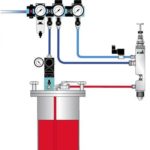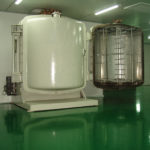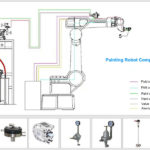Moisture and heat resistance of paint film is an important indicator for testing the performance of paint films after painting.
Definition, purpose and significance of paint film resistance to moisture and heat
The moisture and heat resistance of a paint film refers to the ability of the paint film to protect against the effects of high temperature and high humidity in outdoor environments. When the ambient temperature is high, humid air and saturated water vapor will damage the substrate protected by the coating.
The damage mechanism is mainly as follows: when water penetrates the paint film and reaches the metal substrate, it will produce electrochemical corrosion to the substrate. At the same time, the paint film itself will absorb some water and swell, reducing the adhesion between the paint film and the substrate.
When high temperature and high humidity coexist, the diffusion rate of water vapor into the paint film will be significantly accelerated, which can easily cause the paint-coated substrate to blister, rust, peel, discoloration and other damage. The moisture and heat resistance test of the paint film is also a common corrosion resistance test, which is generally carried out at the same time as the aging resistance and salt spray resistance tests.
At present, it is widely used in the evaluation and comparative testing of corrosion resistance of substrate pretreatment, coating systems or their combinations.
Relevant standards: GB/T174079 (89) Determination of moisture and heat resistance of paint films
Introduction of test methods
1- Test Principle
Due to the uncontrollable outdoor uncertainties and the need to shorten the test time, many industrial product standards have adopted the method of measuring the moisture and heat resistance of paint films to simulate the outdoor high temperature and high humidity environment to assess the moisture and heat corrosion resistance of paint films. The purpose is to simulate the high temperature, high humidity and high corrosion environment in nature in the laboratory, and to evaluate the high temperature and high humidity resistance of the paint film by observing the samples during and after the test.
2- Experimental equipment
At present, temperature and humidity control chambers are commonly used at home and abroad to conduct humidity and heat resistance tests. The equipment generally consists of solution bottles, heating scanners, humidifiers, temperature and humidity meters and controllers, test structures and pipelines, test plate racks, etc. When the test solution is injected into the heating storage tank and preheated, pumped into the humidifier for atomization, and blown into the test box with adjustable temperature and humidity by a fan, a constant temperature and humidity environment is formed in the body.
3- Operation requirements
1) Temperature in the box: (47:t1)℃, relative humidity: (96:t2)%, test water: at least meet the requirements of GB6682 grade 3 water.
2) Sample preparation, maintenance and processing
The selection, processing, preparation methods and maintenance time of the sample substrate for the heat and humidity resistance test generally have corresponding requirements in relevant product standards, and can also be agreed between the entrusting test party and the inspection agency. You can also refer to the provisions of GB/T176589 “Preparation method of paint film for determining resistance to moisture, heat, salt, and weather resistance (artificial acceleration)” to prepare and maintain samples. The back and surrounding areas of the tested panel may be coated with the tested sample or a coating system with known better anti-corrosion properties.
3) Trial, test and inspection of samples
When the curing period of the test plate is over, except for one plate as the standard plate, the other three plates can be put into the test box for testing.
The sample plate should be hung vertically on the sample plate bracket. No contact between the sample plates or between the sample plate and the box body is allowed. The sample plates are not allowed to be stacked. During the test, no condensation is allowed on the surface of the sample plate. After each inspection of the sample plate, the position of the sample plate on the test plate rack should be changed, such as the front row, middle row, and back row.
The test time can refer to the provisions of relevant product standards or the entrusted test party and the inspection agency can agree on a damage indicator as the end of the test, such as: blistering, rust, shedding degree and grade, etc. Common test times are multiples of 24 hours. During continuous testing, the sample is inspected every 48 hours. After the second inspection, the sample can be inspected every 72 hours.
When inspecting the sample, the test sample can be taken out of the box and compared with the standard plate under sufficient light or lighting, and the degree of damage such as blistering, rusting, peeling, discoloration, etc. of the test sample can be evaluated according to the provisions of the GB/T17661995 standard and level.
4) Factors affecting the results of moisture and heat resistance tests
- When inspecting the sample, fingerprints must be avoided on the surface of the sample to avoid accelerating corrosion.
- The stacked placement of test samples will cause water droplets on the upper sample to fall on the lower sample and affect the test results.
- Overcrowded placement of samples may easily cause the samples to come into contact with each other and the box, which may cause poor gas circulation within the electrical couple and the box.
- The damage or failure of the insulation layer of the test box will cause the temperature difference between the inside and outside of the box, causing cold water droplets to form on the top of the box and settle on the test sample, causing test errors.
- The time for inspecting samples should be shortened as much as possible (<0.5h). Too long will affect the test results.




